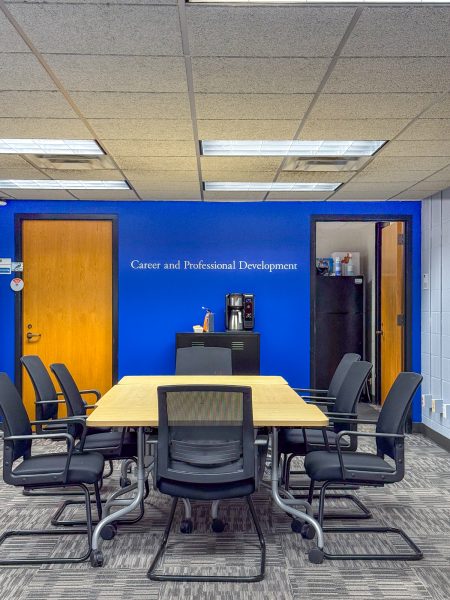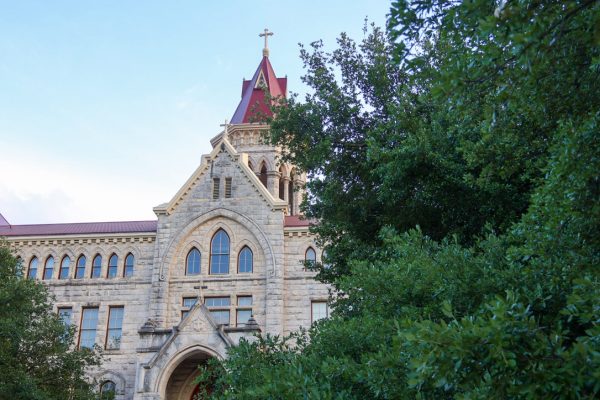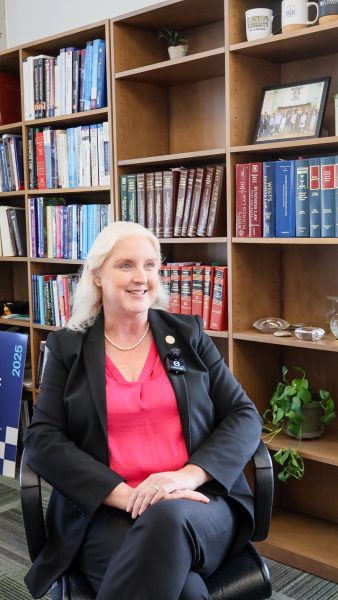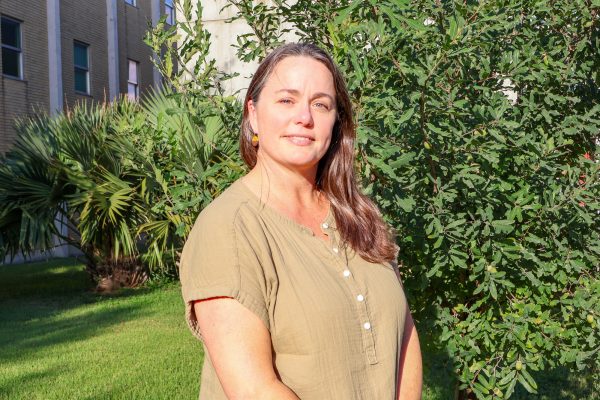St. Edward’s takes steps to increase sustainability awareness
St. Edward’s University is taking steps to create a more environmentally sustainable campus by increasing communication and access to sustainability resources within and outside of the university.
The university created a central sustainability location on campus with the goal of increasing communication, awareness, and access to information within the campus community.
Assistant to the President for Institutional Relations Cristina Bordin is now also the sustainability coordinator to university President George Martin, and her office in Main Building is the central sustainability location on campus.
“Having a central point for the information will enable our students, faculty and staff to learn more about sustainability, to coordinate their efforts and programs with other university areas and to have a central point of communication and data exchange,” Bordin said.
St. Edward’s joined the Association for the Advancement of Sustainability in Higher Education (AASHE), which provides access to sustainability resources such as reports, education resources and other sustainability research on their website. AASHE also hosts an annual conference. Membership is extended to the entire campus community, meaning everyone will have access to AASHE website resources.
Other universities in Austin such as The University of Texas at Austin, Huston-Tillotson University and Austin Community College are also members of AASHE.
“It’s the primary organization for sharing ideas and … that’s how we can get ideas about what we can do here,” Assistant Professor of Environmental Science and Policy Peter Beck said.
Beck recently taught two Environmental Policy courses that focused on sustainability research, and students in his courses used AASHE resources for research material. In spring 2009, Environmental Science and Policy students tracked campus emissions by conducting a greenhouse gas inventory.
In fall 2010, students researched strategies to help the university reduce emissions and develop a formal climate action plan. AASHE provides links to hundreds of climate action plans from other institutions of higher education as well as links to greenhouse gas inventory reports.
Environmental Science and Policy major Jarymar Arana took both courses and is now combining student research into a climate action plan designed specifically for St. Edward’s.
“My role was combining all of this research and putting it together in one comprehensive report so that it is easily accessible to the administration and the Environmental Stewardship Committee and also for students in the future,” Arana said.
Arana is working with Bordin and Martin to set a presentation date with the Environmental Stewardship Committee in late February.
“One of the missions is to prepare … students for a changing world, and the whole nation is moving toward increased knowledge for environmental issues,” Arana said. “It’s important for students to understand how climate change works and how to make the right decisions to address the issue of climate change.”
The St. Edward’s administration solidified the university’s commitment to environmental sustainability in the 2015 Strategic Plan. According to the plan, “phased implementation of the master plan for 2015 will continue the quality enhancement of the campus through sustainable improvements of academic, residential and recreational facilities and landscaping.”
Beck said the climate action plan is not just an activity for a class or a way to save money.
“The eventual goal is that … it’s an integral part of St. Edward’s University to build on and promote and be known for,” Beck said.






